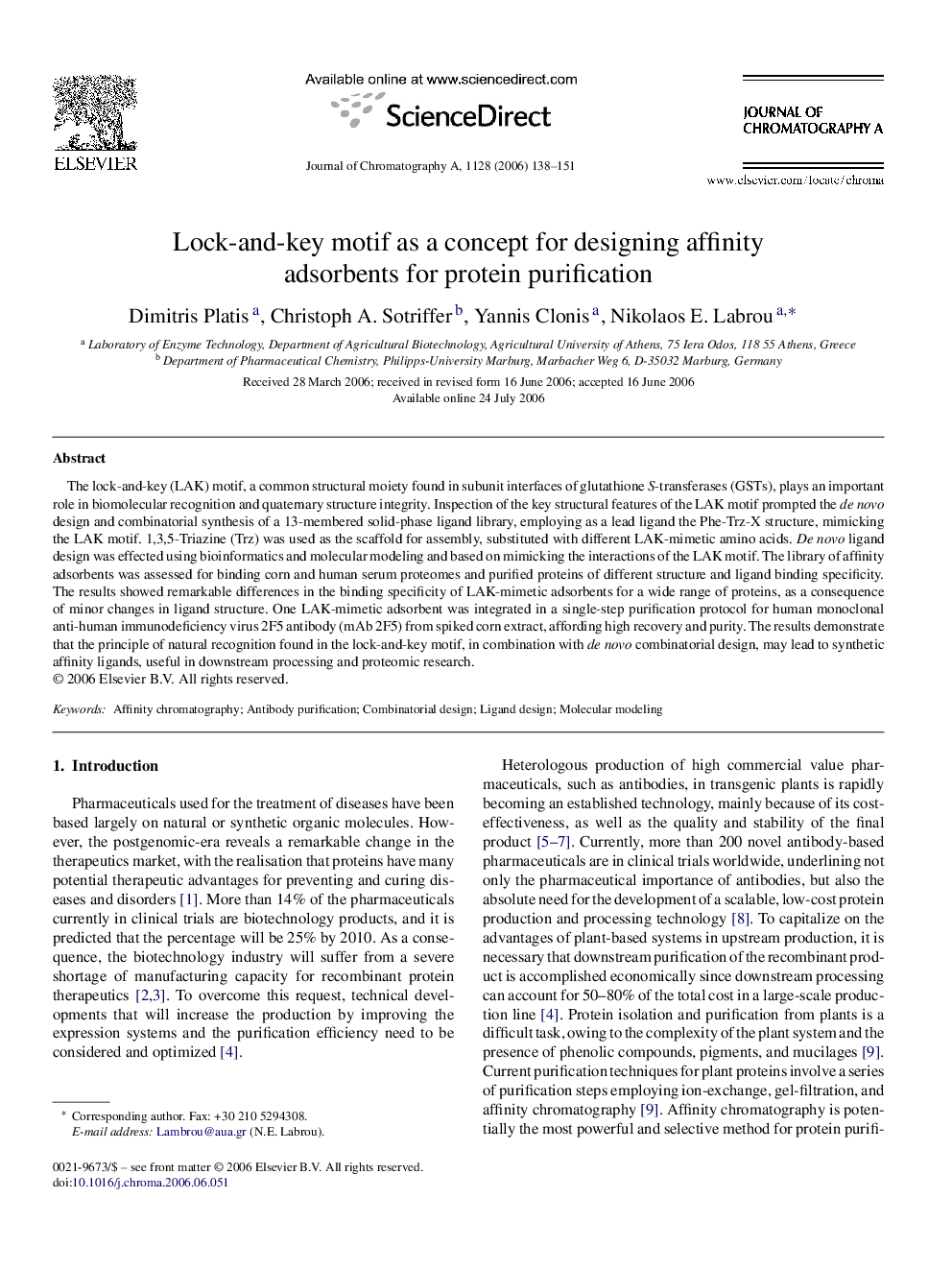| کد مقاله | کد نشریه | سال انتشار | مقاله انگلیسی | نسخه تمام متن |
|---|---|---|---|---|
| 1211445 | 1493762 | 2006 | 14 صفحه PDF | دانلود رایگان |

The lock-and-key (LAK) motif, a common structural moiety found in subunit interfaces of glutathione S-transferases (GSTs), plays an important role in biomolecular recognition and quaternary structure integrity. Inspection of the key structural features of the LAK motif prompted the de novo design and combinatorial synthesis of a 13-membered solid-phase ligand library, employing as a lead ligand the Phe-Trz-X structure, mimicking the LAK motif. 1,3,5-Triazine (Trz) was used as the scaffold for assembly, substituted with different LAK-mimetic amino acids. De novo ligand design was effected using bioinformatics and molecular modeling and based on mimicking the interactions of the LAK motif. The library of affinity adsorbents was assessed for binding corn and human serum proteomes and purified proteins of different structure and ligand binding specificity. The results showed remarkable differences in the binding specificity of LAK-mimetic adsorbents for a wide range of proteins, as a consequence of minor changes in ligand structure. One LAK-mimetic adsorbent was integrated in a single-step purification protocol for human monoclonal anti-human immunodeficiency virus 2F5 antibody (mAb 2F5) from spiked corn extract, affording high recovery and purity. The results demonstrate that the principle of natural recognition found in the lock-and-key motif, in combination with de novo combinatorial design, may lead to synthetic affinity ligands, useful in downstream processing and proteomic research.
Journal: Journal of Chromatography A - Volume 1128, Issues 1–2, 22 September 2006, Pages 138–151